
Mbam Djerem National Park: The Hidden Gem of Cameroon
Discover the untouched wilderness and rich biodiversity of Mbam Djerem National Park, a hidden gem in Cameroon offering diverse landscapes and unforgettable wildlife encounters.
Mbam Djerem National Park is a breathtaking natural sanctuary located in the heart of Cameroon. It stretches over 4,200 square kilometers and offers a unique blend of savannah, forest, and wetland ecosystems. This park is a haven for wildlife enthusiasts with its wide variety of animals including elephants, hippos, and primates. Bird watchers will be delighted to spot over 360 bird species. The park's lush landscapes and diverse habitats make it an ideal location for hiking and nature walks. Visitors can explore its dense forests, open grasslands, and winding rivers, experiencing the natural beauty and tranquility of Cameroon. The park is also a significant conservation area, playing a crucial role in protecting the region’s biodiversity. For those interested in cultural experiences, Mbam Djerem National Park is located near several local villages where visitors can learn about the traditional ways of life of the indigenous peoples. These cultural interactions provide a deeper understanding of the region’s heritage and customs. Access to the park is relatively easy from the capital city, Yaoundé, making it a convenient yet off-the-beaten-path destination for travelers. Whether you are an adventurer, a wildlife lover, or seeking peace and solitude, Mbam Djerem National Park offers an unforgettable experience.
Local tips in Mbam Djerem National Park
- Best time to visit is during the dry season from November to February for easier wildlife spotting.
- Hire a local guide to enhance your experience and ensure you don't miss any hidden spots.
- Pack insect repellent and sunblock to protect yourself from insects and the sun.
- Carry enough cash as there are no ATMs in the vicinity of the park.
- Respect local customs and traditions when visiting nearby villages.
Mbam Djerem National Park: The Hidden Gem of Cameroon
Mbam Djerem National Park is a breathtaking natural sanctuary located in the heart of Cameroon. It stretches over 4,200 square kilometers and offers a unique blend of savannah, forest, and wetland ecosystems. This park is a haven for wildlife enthusiasts with its wide variety of animals including elephants, hippos, and primates. Bird watchers will be delighted to spot over 360 bird species. The park's lush landscapes and diverse habitats make it an ideal location for hiking and nature walks. Visitors can explore its dense forests, open grasslands, and winding rivers, experiencing the natural beauty and tranquility of Cameroon. The park is also a significant conservation area, playing a crucial role in protecting the region’s biodiversity. For those interested in cultural experiences, Mbam Djerem National Park is located near several local villages where visitors can learn about the traditional ways of life of the indigenous peoples. These cultural interactions provide a deeper understanding of the region’s heritage and customs. Access to the park is relatively easy from the capital city, Yaoundé, making it a convenient yet off-the-beaten-path destination for travelers. Whether you are an adventurer, a wildlife lover, or seeking peace and solitude, Mbam Djerem National Park offers an unforgettable experience.
When is the best time to go to Mbam Djerem National Park?
Unmissable attractions to see
Mont Ngaoundal
Discover the stunning vistas and diverse wildlife of Mont Ngaoundal, a premier hiking destination in Cameroon that offers a unique outdoor experience.

Mon Fouy
Explore Mon Fouy, a breathtaking tourist attraction in Matsari, Cameroon, where nature's beauty meets vibrant local culture for an unforgettable experience.
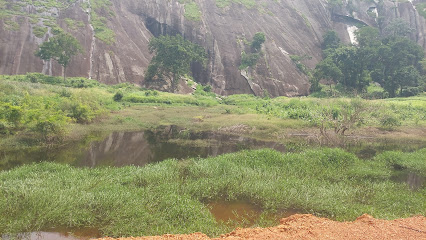
Deng Deng National Park
Discover the biodiversity and breathtaking beauty of Deng Deng National Park, a serene escape for nature lovers in Cameroon.
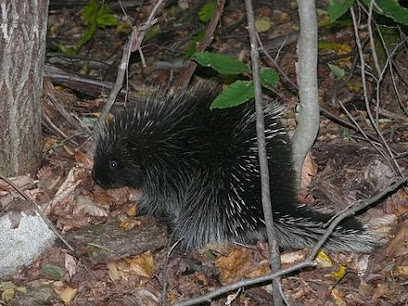
EA_AHMA_KANGARA
Explore the serene beauty of EA_AHMA_KANGARA Park in Ngaoundal, a perfect retreat for nature lovers and families seeking tranquility.

Ngalbidje ngaoundal
Discover the breathtaking landscapes and rich culture of Ngalbidje Ngaoundal, a must-see tourist attraction in Zamboi, Cameroon.

Réserve de Faune de Pangaret Djérem
Explore the breathtaking natural beauty of Réserve de Faune de Pangaret Djérem, a wildlife haven in Cameroon, perfect for nature lovers and adventure seekers.

Essential places to dine
Maison H
Discover exquisite dining at Maison H in Douala - where local flavors meet culinary artistry in an inviting atmosphere.

Tchopetyamo
Discover authentic Cameroonian flavors at Tchopetyamo - where culinary tradition meets vibrant hospitality in Douala.

Saga Africa Restaurant - Akwa, Douala
Discover the rich flavors of Africa and Europe at Saga Africa Restaurant in Douala's vibrant Akwa district.

Le Safoutier Restaurant
Experience exquisite dining at Le Safoutier Restaurant in Yaoundé's Hilton Hotel; where Cameroonian flavors meet elegant ambiance.

Restaurant 5 Fourchettes
Experience the rich flavors of Cameroon at Restaurant 5 Fourchettes in Douala - where culinary tradition meets modern dining.

Le Boj, Douala
Discover the vibrant flavors and chic ambiance at Le Boj in Douala - where local meets international cuisine.

Restaurant Kajazoma
Experience exquisite local and international flavors at Restaurant Kajazoma in Yaoundé's vibrant dining scene.

LA MARQUISE RESTAURANT
Experience the best of Cameroonian cuisine at La Marquise Restaurant in Douala - where tradition meets modern dining.

Bois d'ebene
Discover authentic Cameroonian cuisine at Bois d'Ebene - where flavors meet culture in a vibrant dining atmosphere.

Bombay Masala
Experience the rich flavors of India at Bombay Masala in Douala – where every dish tells a story.

La Salsa Restaurant
Discover authentic Cameroonian cuisine blended with international flavors at La Salsa Restaurant in Yaoundé's Quartier Bastos.

Chez Wou
Savor authentic Chinese cuisine in Yaoundé at Chez Wou—where tradition meets taste in every dish.

Le Plaisir du Gout
Experience the best of traditional and modern cuisine at Le Plaisir du Gout in Kribi - where every meal tells a story.
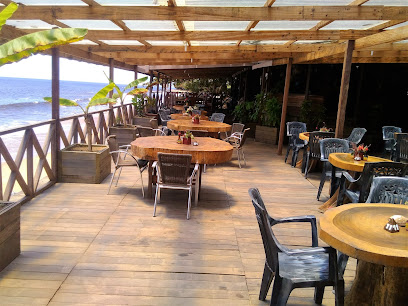
La Fourchette
Experience the flavors of Cameroon at La Fourchette, Douala's premier dining destination offering exquisite cuisine and impeccable service.

African food by Emy
Savor authentic Cameroonian dishes at African Food by Emy in Douala—an inviting spot for food lovers seeking local flavors.
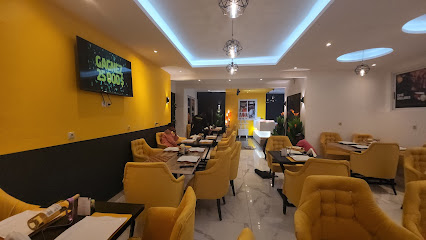
Markets, malls and hidden boutiques
Office Cerealier Ngaoundal
Explore the authentic local products and flavors at Office Cerealier Ngaoundal, a grocery store that embodies the culinary heart of the region.

ALICO ngaoundal
Explore ALICO Ngaoundal: A vibrant supermarket offering a taste of local culture and a range of products in the heart of Ngaoundal.

Boulangerie Moderne de Ngaoundal
Experience the authentic flavors of Ngaoundal at Boulangerie Moderne, where every bite tells a story of local tradition and passion for baking.

Express Exchange Ngaoundal
Discover the vibrant culture of Ngaoundal at Express Exchange, your go-to shopping mall for local crafts, delicacies, and unforgettable experiences.

Depôt des Brasseries
Discover unique treasures and sustainable shopping at Depôt des Brasseries, a consignment shop in Ngaoundal offering eclectic finds and local charm.

Carrefour Belaka
Explore Carrefour Belaka, a vibrant shopping mall in Ngaoundal with local and international brands, dining options, and family-friendly entertainment.
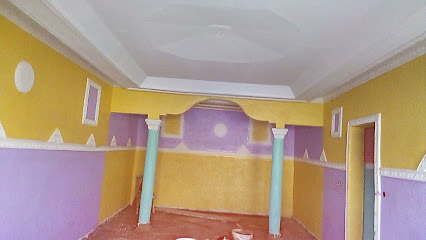
Boutique Aladji Djibirla Dembo
Explore the vibrant culture of Cameroon at Boutique Aladji Djibirla Dembo, where local craftsmanship meets unique shopping experiences.

Marché Du Village
Discover the vibrant local culture and unique artisanal goods at Marché Du Village in Martap, a must-visit shopping destination.

BIRI BOUTIQUE
Biri Boutique: Your gateway to local flavors and international goods in the heart of Ngaoundal.

AHMA SERVICE
Discover the vibrant shopping experience at AHMA SERVICE in Ngaoundal, where local crafts meet modern retail in a cultural haven.

Boutique Alico
Explore Boutique Alico in Ngaoundal, a vibrant shopping mall offering unique local crafts and contemporary fashion in a charming setting.
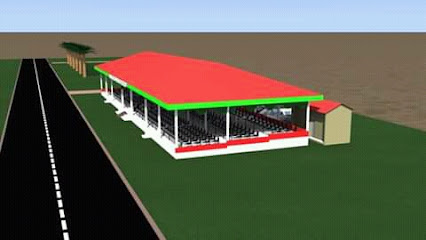
En Face du RAIL
Discover local flavors and essentials at En Face du RAIL, Goyoum's bustling supermarket for an authentic shopping experience.

Bread
Explore Bread in Ngaoundal for unique home goods that reflect local craftsmanship and culture, perfect for gifts or souvenirs.

AGENCE NARRAL
Explore AGENCE NARRAL in Ngaoundal for a diverse shopping experience that highlights local culture and craftsmanship, perfect for all tourists.

Boutique Orange NGAOUNDAL
Stay connected in Ngaoundal with Boutique Orange - your go-to cell phone store for all mobile needs.

Essential bars & hidden hideouts
Black & White Sensation (Bastos)
Experience Yaoundé's vibrant nightlife at Black & White Sensation, a stylish lounge offering exquisite cocktails and an inviting ambiance.

Circle Club
Experience the vibrant nightlife of Yaoundé at Circle Club, a chic lounge perfect for socializing and enjoying expertly crafted cocktails.

BE BOP
Immerse yourself in Douala's nightlife at BE BOP, where inventive cocktails and vibrant ambiance create unforgettable experiences.

MACADAM BIKERS
Experience the lively nightlife at Macadam Bikers, a premier bar in Yaoundé, perfect for tourists seeking vibrant social scenes.

Bambou Lounge
Discover Bambou Lounge in Yaoundé - a trendy bar and grill perfect for delightful meals, refreshing cocktails, and vibrant nightlife.

Mermo NightLife
Discover the heart of Douala's nightlife at Mermo NightLife, where vibrant music and delicious drinks create unforgettable memories.

Le Mintar Snack Bar Cabaret
Discover the vibrant nightlife and local flavors at Le Mintar Snack Bar Cabaret in Obala, a perfect spot for snacks and socializing.

Complexe Grand Mbam
Discover the vibrant nightlife of Douala at Complexe Grand Mbam, a lively bar offering a taste of local culture and refreshing drinks.
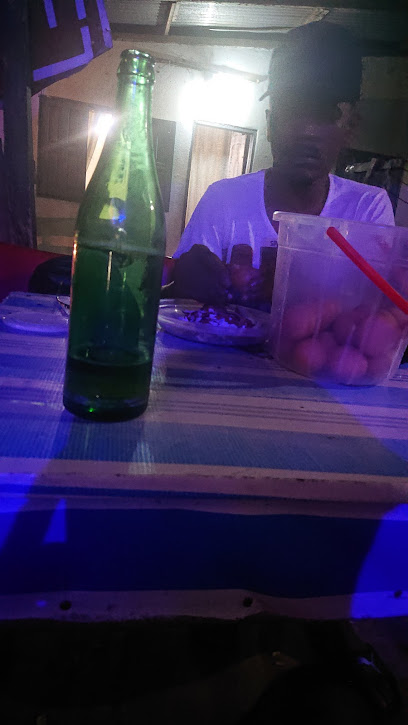
Black and White Limbe
Discover the vibrant nightlife of Black and White Limbe, an energetic lounge and restaurant offering food, drinks, and music in a lively atmosphere.

Le Discophage, Douala
Experience the vibrant nightlife at Le Discophage in Douala, where great drinks and lively ambiance create unforgettable memories.
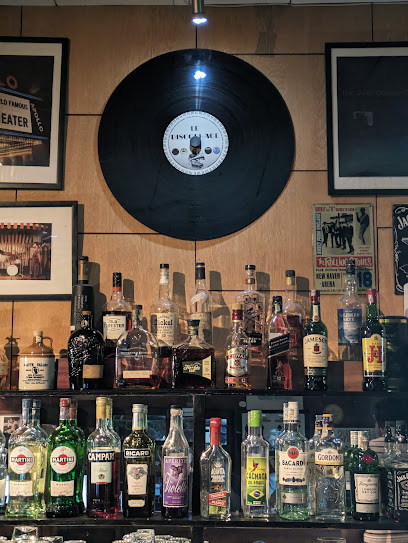
Harrods Lounge
Experience the ultimate dining luxury at Harrods Lounge in Douala, where exquisite cuisine meets elegant ambiance.

Phoenix Bar Cabaret Grillades
Discover the vibrant flavors and lively entertainment at Phoenix Bar Cabaret Grillades in Douala, where every meal is a celebration.

Panamera Lounge
Discover the lively ambiance of Panamera Lounge in Douala, where exquisite cocktails meet delicious cuisine in a stylish setting.

Carrefour Ministère de Soya
Discover the authentic taste of Cameroon at Carrefour Ministère de Soya, where delicious grilled dishes meet a warm, inviting atmosphere.

SWITCH NIGHT-CLUB
Experience the electrifying nightlife of Douala at SWITCH NIGHT-CLUB, where music and dance create unforgettable memories.

Local Phrases about Mbam Djerem National Park
-
- HelloMbolo
[m-boh-loh] - GoodbyeAdieu
[ah-dyuh] - YesEeh
[eh] - NoTsi
[chee] - Please/You're welcomeToh
[toh] - Thank youSiu
[syoo] - Excuse me/SorryNde
[en-deh] - How are you?Wewe le?
[weh-weh leh] - Fine. And you?Mbekam. Na wo?
[m-beh-kahm. nah woh] - Do you speak English?Wewe ne mbaa English?
[weh-weh neh m-bah english] - I don't understandA tse ti
[ah cheh tee]
- HelloMbolo
-
- I'd like to see the menu, pleaseA nde nyika menu, toh
[ah en-deh nyee-kah menu, toh] - I don't eat meatA tse nyama
[ah cheh nyah-mah] - Cheers!Njoh!
[n-joh] - I would like to pay, pleaseA nde nyika nga, toh
[ah en-deh nyee-kah ngah, toh]
- I'd like to see the menu, pleaseA nde nyika menu, toh
-
- Help!Seh!
[seh] - Go away!Nda!
[en-dah] - Call the Police!Nyika Polis!
[nyee-kah poh-lees] - Call a doctor!Nyika dokte!
[nyee-kah dohk-teh] - I'm lostA tse yi
[ah cheh yee] - I'm illA tse nyama
[ah cheh nyah-mah]
- Help!Seh!
-
- I'd like to buy...A nde nyika...
[ah en-deh nyee-kah...] - I'm just lookingA tse laa
[ah cheh lah] - How much is it?Nyikam ti na?
[nyee-kahm tee nah] - That's too expensiveTi nyikam tii
[tee nyee-kahm tee] - Can you lower the price?Nkon te nyikam?
[n-kohn teh nyee-kahm]
- I'd like to buy...A nde nyika...
-
- What time is it?Nyika nsi?
[nyee-kah n-see] - It's one o'clockNsinga yi
[n-see-ngah yee] - Half past (10)Nsi ne nyam
[n-see neh nyahm] - MorningMungu
[moo-ngoo] - AfternoonMbeeh
[m-beh] - EveningMbeeh be nyam
[m-beh beh nyahm] - YesterdayNdalaa
[en-dah-lah] - TodayNya
[nyah] - TomorrowNnom
[n-nom] - 1Yi
[yee] - 2Nyam
[nyahm] - 3Si
[see] - 4Na
[nah] - 5Nyin
[nyeen] - 6Wu
[woo] - 7Ntu
[n-too] - 8Nyi
[nyee] - 9Kuu
[koo] - 10Nyam
[nyahm]
- What time is it?Nyika nsi?
-
- Where's a/the...?Wewe ne...
[weh-weh neh...] - What's the address?Wewe ne nganya?
[weh-weh neh ngahn-yah] - Can you show me (on the map)?Nkon nyika (na map)?
[n-kohn nyee-kah (nah map)] - When's the next (bus)?Nyika nyaa (ndi bus)?
[nyee-kah nyah (ndee bus)] - A ticket (to ....)Nyika tiketi (ka ....)
[nyee-kah tee-keh-tee (kah)]
- Where's a/the...?Wewe ne...
History of Mbam Djerem National Park
-
Prior to colonial influence, the region now known as Mbam Djerem National Park was inhabited by various indigenous groups, such as the Tikar and Gbaya people. These communities maintained a close relationship with the land, relying on its resources for hunting, gathering, and small-scale agriculture. The dense forests and diverse ecosystems of the area played a crucial role in their cultural and spiritual practices.
-
Mbam Djerem National Park was officially established in 2000 by the Cameroonian government as part of efforts to protect the region's unique biodiversity and ecosystems. The park covers approximately 4,200 square kilometers and is situated at the transition zone between the forested south and the savanna north, creating a diverse range of habitats that support numerous species of flora and fauna.
-
The establishment of Mbam Djerem National Park marked the beginning of significant conservation efforts aimed at preserving its rich biodiversity. The park is home to a wide variety of wildlife, including elephants, lions, chimpanzees, and numerous bird species. International conservation organizations have partnered with local communities and the government to implement sustainable practices and protect endangered species.
-
Despite its protected status, Mbam Djerem National Park faces several challenges, including poaching, illegal logging, and human-wildlife conflict. Conservationists and park authorities work tirelessly to address these issues through anti-poaching patrols, community education programs, and the promotion of alternative livelihoods to reduce dependency on natural resources.
-
Mbam Djerem National Park is not only a natural treasure but also a cultural one. The park's landscapes and wildlife hold significant cultural value for the indigenous communities. Traditional practices, folklore, and rituals often incorporate elements of the natural world, reflecting a deep respect and reverence for the environment.
-
In recent years, Mbam Djerem National Park has become a destination for eco-tourism, attracting visitors interested in experiencing its pristine landscapes and diverse wildlife. The park offers guided tours, bird-watching excursions, and opportunities to learn about local conservation efforts. Sustainable tourism initiatives aim to provide economic benefits to local communities while minimizing environmental impacts.
Mbam Djerem National Park Essentials
-
Mbam Djerem National Park is located in the central region of Cameroon. The closest major city is Yaoundé, which has the nearest international airport, Nsimalen International Airport. From Yaoundé, you can hire a 4x4 vehicle or book a transport service to cover the approximately 300 kilometers to the park. The drive takes around 6 to 7 hours, depending on road conditions. Alternatively, you can use local buses, but they may not be as reliable or comfortable as private transport.
-
Within Mbam Djerem National Park, the most practical way to get around is by hiring a 4x4 vehicle due to the rugged terrain. Guided tours often provide transportation as part of their package. For those who prefer public transport, local buses and motorbike taxis (boda-bodas) are available, but they may not cover every part of the park. Walking is also an option for exploring smaller areas.
-
The official currency in Cameroon is the Central African CFA Franc (XAF). Credit cards are rarely accepted in remote areas like Mbam Djerem National Park, so it is advisable to carry sufficient cash. ATMs are available in Yaoundé and other major cities, but not within the park itself. Make sure to withdraw enough money before heading to the park.
-
Mbam Djerem National Park is generally safe for tourists, but it's important to take standard precautions. Avoid walking alone at night and always inform someone of your travel plans. Petty theft can occur, so keep an eye on your belongings. There are no specific high-crime areas within the park, but it is advisable to stay alert and aware of your surroundings. Always follow the guidance of park staff and guides.
-
In case of emergency, contact the nearest park ranger station or call the local emergency number, 112. Medical facilities are limited within the park, so it is essential to have travel insurance that includes medical evacuation. For minor health issues, carry a basic first-aid kit and any necessary medications. The nearest hospitals are in Yaoundé, so plan accordingly.
-
Fashion: Do wear light, breathable clothing and sturdy walking shoes. Avoid flashy attire. Religion: Do respect local customs and traditions. Public Transport: Do negotiate fares in advance when using local transport. Don't rely on public transport schedules; they can be unpredictable. Greetings: Do greet people with a smile and a handshake. Don't be overly familiar with strangers. Eating & Drinking: Do try local dishes and drink bottled water. Don't eat street food from unverified sources.
-
To experience Mbam Djerem National Park like a local, engage with the park rangers and guides who can provide in-depth knowledge about the flora and fauna. Visit during the dry season (November to March) for the best wildlife viewing opportunities. Participate in conservation activities if available, and respect the natural environment by not littering. Carry a good pair of binoculars for bird watching, as the park is home to a diverse range of bird species.
Nearby Cities to Mbam Djerem National Park
-
Things To Do in Ngaoundéré
-
Things To Do in Bafia
-
Things To Do in Yaoundé
-
Things To Do in Carnot
-
Things To Do in Foumban
-
Things To Do in Bafoussam
-
Things To Do in Mbouda
-
Things To Do in Bamenda
-
Things To Do in Ebolowa
-
Things To Do in Dschang
-
Things To Do in Nkongsamba
-
Things To Do in Edea
-
Things To Do in Bitam
-
Things To Do in Douala
-
Things To Do in Yola





